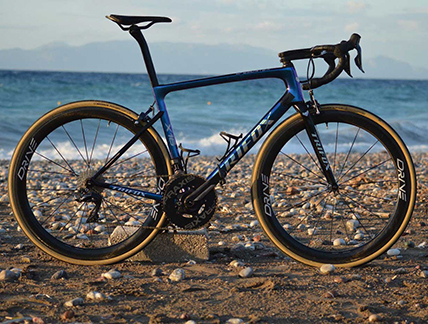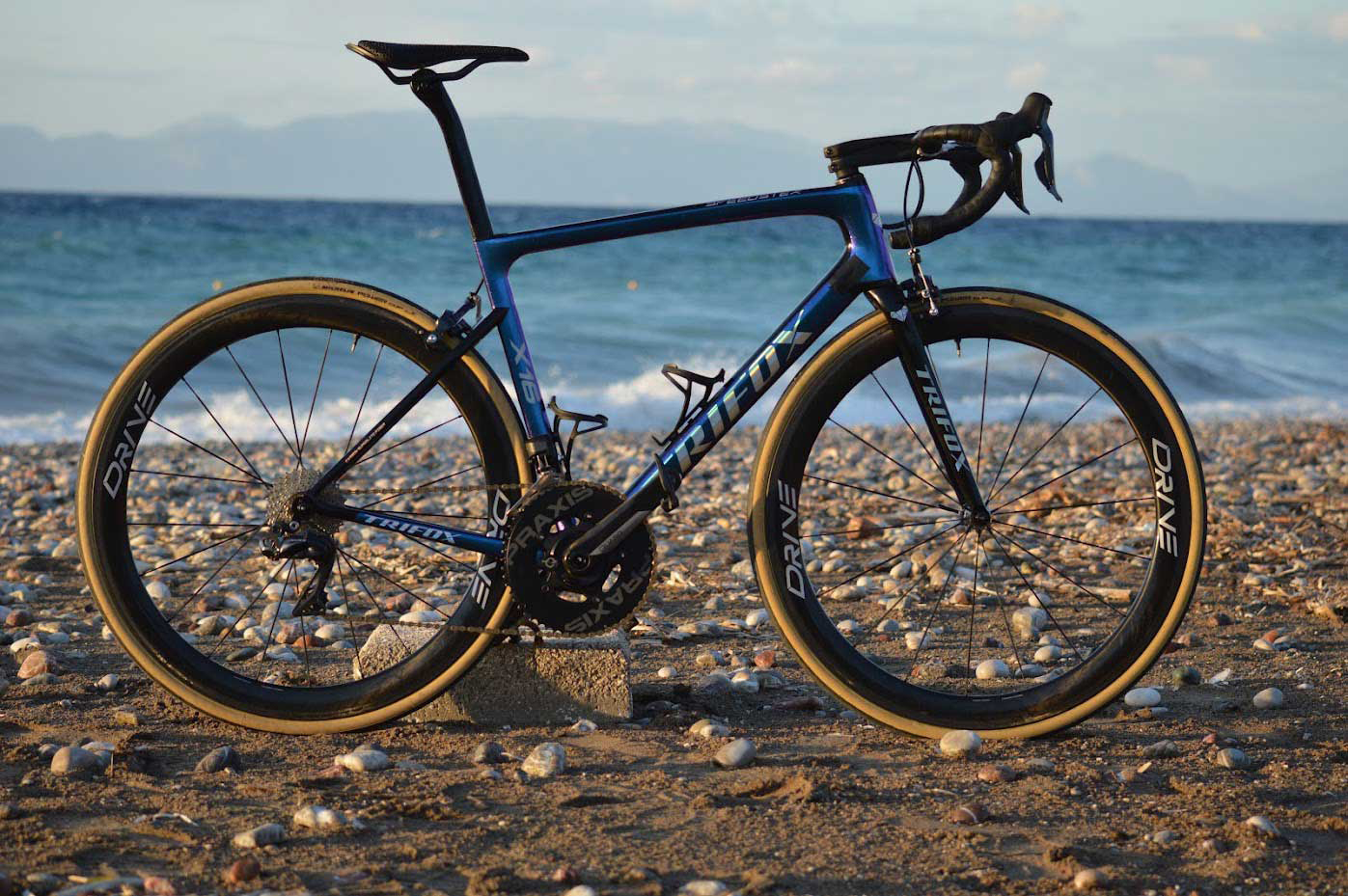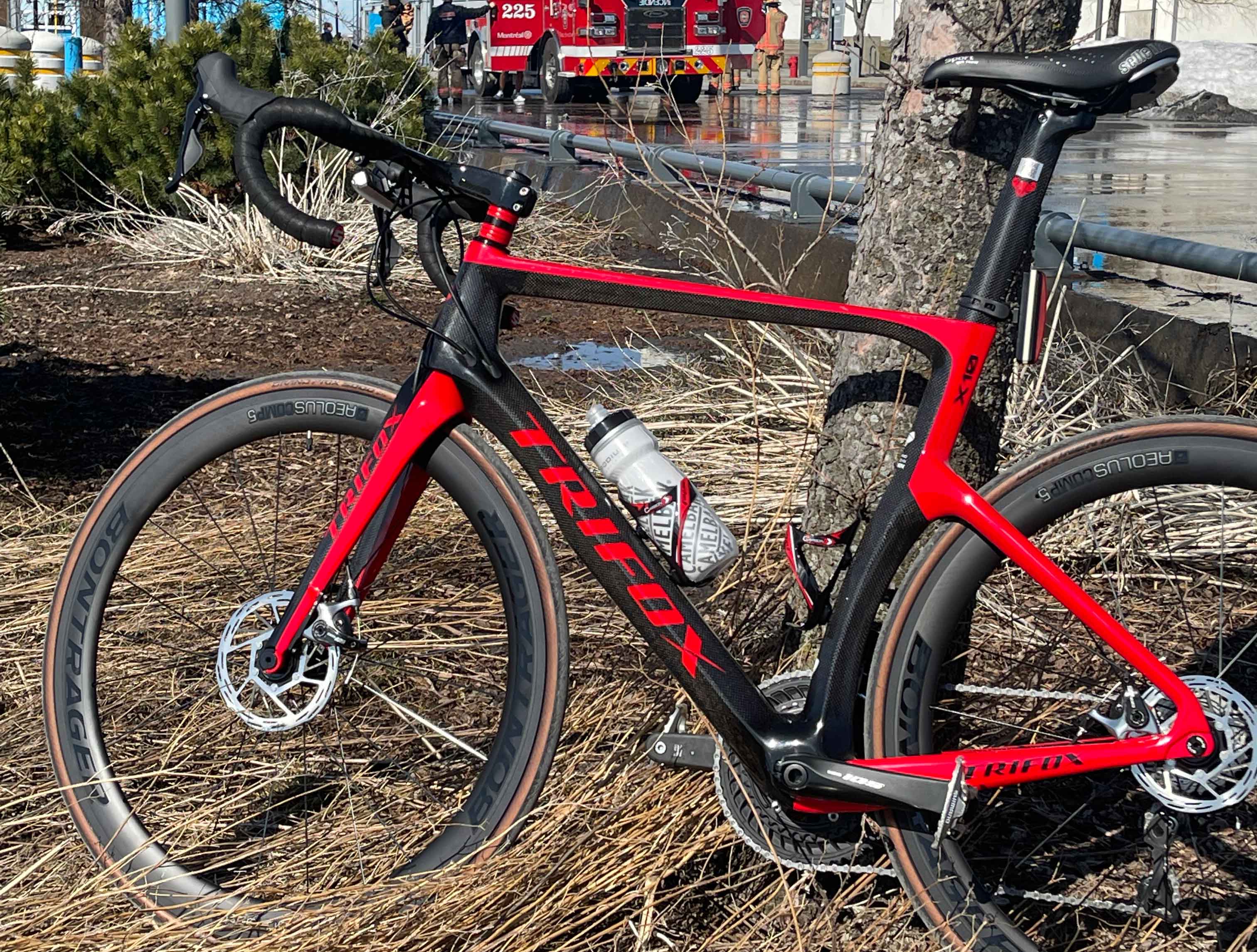Buying a road bike can be an exciting experience, but it's important to get the right size. A bike that's too big or small can lead to discomfort, poor performance, and even injury. That's why it’s crucial to know how to measure a road bike frame correctly.
In this blog post, we'll cover everything you need to know about measuring a road bike frame, from determining your ideal bike size to taking accurate measurements. Whether you're a seasoned cyclist or just starting out, this guide will help you choose the perfect road bike frame size for your needs.
Step 1: Determine Your Ideal Bike Size
The first step in measuring a road bike frame is to determine your ideal bike size. This will depend on a number of factors, including your height, inseam, riding style, and personal preference. A general rule of thumb is to measure your inseam and multiply it by 0.65 to find your ideal frame size. However, this is just a starting point, and you may need to make adjustments depending on your body type and riding style.
Step 2: Measure the Top Tube
Once you've determined your ideal bike size, it's time to start taking measurements. The first measurement you'll need is the top tube length. This is the horizontal distance between the seat tube and the head tube. To measure the top tube length, place a straightedge or ruler against the center of the head tube and measure to the center of the seat tube. Be sure to take this measurement with the bike level, and avoid measuring along the curve of the tube.
Step 3: Measure the Seat Tube
The next measurement you'll need is the seat tube length. This is the vertical distance between the center of the bottom bracket and the center of the top tube. To measure the seat tube length, place a tape measure at the center of the bottom bracket and measure to the top of the seat tube. Keep in mind that the seat tube length should be adjusted based on the length of your inseam.
Step 4: Measure the Standover Height
The standover height is the distance between the ground and the top of the top tube when the bike is standing upright. This measurement is important to ensure that you can stand comfortably over the bike without touching the top tube. To measure the standover height, stand over the bike with your feet flat on the ground and measure the distance between the ground and the top of the top tube.
Step 5: Adjust for Riding Style
Finally, it's important to adjust your measurements based on your riding style. For example, if you're planning to use your road bike for racing, you may want a smaller frame size for a more aerodynamic position. On the other hand, if you're using your road bike for touring or long-distance riding, you may want a larger frame size for more comfort and stability.

Conclusion:
Measuring a road bike frame may seem daunting at first, but it's an essential step in choosing the right bike for your needs. By following these steps and taking accurate measurements, you can find the perfect road bike frame size for your height and riding style.
Remember to also take into account your comfort and preference when selecting the frame size. The right sized bike will help you ride further, faster, and with more comfort. Start exploring the trails or roads with your new bike!


Riding a road bike can be both an exciting and healthy activity. However, to experience ultimate comfort and performance, you need to choose the right road bike with proper frame size. Luckily, you don't need to stress yourself out about it.
In this comprehensive guide, we will be discussing everything you need to know about road bike frame size chart. So, buckle up and let's dive in!
To start with, what is the right frame size for you? The answer to this depends on a whole lot of factors, but the most essential are your height and inseam measurements. These two factors are what the experts use to help you select the right frame size suitable for your body anatomy. Also, your body flexibility and riding style can come in handy in determining the size of your preferred road bike.
Next, let's explain how to measure inseam and height. Measuring inseam is relatively easy; stand against a wall barefooted and measure the distance from your crotch to your ankle. On the other hand, measuring height requires you to stand against a wall barefooted, and someone else measures the distance between the top of your head and the floor.
After measuring your inseam and height, the next step is to use road bike frame size chart to determine the right frame size for you. Note that different manufacturers may have different sizing charts, but most follow the same essential measurements. Most bike shops offer chart sizing assistance when purchasing a bike.
Another factor that can aid you in selecting the right frame size is considering your riding style and preferences. If you prefer an aggressive riding position, you may opt for a smaller frame size than the chart suggests to lower the handlebars' height. Alternatively, if you prefer a more upright riding posture, you may choose a more significant frame size than the sizing chart to increase the handlebar height.
More so, moving beyond the standard frame, there are options for different frame geometries. Generally, road bikes come in either a compact or classic geometry. Compact frames have sloping top tubes, which allow for shorter rear triangles and clearer standover heights, while classic geometry frames have horizontal top tubes, providing a longer rear triangle. Taller riders typically opt for compact frames, while shorter riders opt for classic geometry frames.

Conclusion:
Choosing the right road bike frame size can make all the difference in your cycling experience, from the comfort and efficiency of your ride to your performance on the road.
With the step-by-step guide provided in this article, you now have enough information to make an informed decision on the right frame size for your body. Remember to factor in your riding style and preferences when choosing a frame. With the right frame size, you're on the verge of enjoying an unforgettable cycling experience that will keep you fit and healthy.

When it comes to choosing the right road bike frameset, there are two popular options to consider: steel and carbon fiber. Both materials have their unique strengths and weaknesses, and each one is suited for different types of riders and riding styles.
In this article, we will discuss the differences between steel and carbon fiber road bike framesets, their pros and cons, and which one is best suited for you.
Steel Road Bike Frameset:
Steel has been the preferred material for road bike frames for decades due to its strength, durability, and ride quality. Steel frames are known for their comfortable and smooth ride thanks to their natural vibration damping properties. They are also ideal for touring and long-distance rides due to their ability to carry heavy loads.
Pros:Comfortable and smooth ride
Durable and long-lasting
Ideal for touring and long-distance rides
Affordable
Cons:Heavy compared to carbon fiber
Not as stiff, making them less responsive
Prone to rust and corrosion if not maintained properly
Carbon Fiber Road Bike Frameset:
Carbon fiber is a relatively new material used in road bike frames, but it has quickly gained popularity due to its light weight, stiffness, and aerodynamic properties. Carbon frames are designed to provide maximum power transfer and responsiveness, making them ideal for racing and high-performance rides.
Pros:
Lightweight and stiff, providing maximum power transfer
Aerodynamic properties reduce wind resistance, increasing speed
Customizable layup for different ride characteristics
Can be molded into complex shapes for improved aesthetics
Cons:
Expensive compared to steel
Not as durable as steel and more prone to damage from impacts
Harsh ride quality due to lack of vibration damping properties
Requires special care and maintenance to avoid damage from UV exposure and stress
Which One to Choose?
Choosing between steel and carbon fiber road bike frameset comes down to your riding style, preferences, and budget. If you prioritize comfort, durability, and affordability, steel is the way to go. It's ideal for touring, long-distance rides, and everyday use.
On the other hand, if you prioritize speed, performance, and aesthetics, carbon fiber is the better choice. It's ideal for racing, high-performance rides, and those who want the lightest and most responsive bike possible. You can find a carbon road bike frameset for you on the Trifox website.
Conclusion:
In conclusion, choosing between road bike steel frameset and carbon road bike frameset comes down to your personal preferences, riding style, and budget. Both materials have their unique strengths and weaknesses, and each one is suited for different types of riders and riding styles.
If you're still unsure which one to choose, we recommend trying out both materials to see which one feels the most comfortable and suitable for you. Remember, the right frameset can make all the difference in your cycling experience, so choose wisely.

Road biking is a fun and exhilarating way to explore the great outdoors while getting a good workout. But if you're new to the sport, one of the most intimidating aspects can be figuring out what size road bike frame you need. Getting the right fit is crucial for comfort, efficiency, and preventing injury.
The first step in finding the right road bike frame size is to measure yourself. Most bike manufacturers use the measurement of the length of the seat tube to determine frame size, usually measured in centimeters. To measure yourself, stand barefoot with your back against a wall, and measure the distance from the floor to your crotch. This measurement is known as inseam length and is a good starting point for choosing the right frame size.
Once you know your inseam length, you can consult a road bike frame size chart. These charts typically list rider height and inseam length to recommend a frame size. It's important to remember that these charts are just a starting point, and riders may fall in between sizes or have different proportions that affect fit. It's always best to test-ride a bike before purchasing it to ensure a comfortable fit.
In addition to frame size, it’s important to consider other factors that affect fit, such as saddle height and handlebar reach. Saddle height is the distance between the top of the saddle and the center of the bottom bracket, and can be adjusted by raising or lowering the saddle. Handlebar reach is the distance between the saddle and the handlebars and can be adjusted by changing the stem or handlebars themselves.

One thing to keep in mind when it comes to frame size is that smaller frames tend to be more maneuverable and easier to handle, but they may not be as comfortable for long rides or for taller riders. Larger frames offer a more upright riding position and are better for taller riders, but can be less maneuverable. It’s all about finding the right balance of comfort and performance for your individual needs.
If you're in the market for a new road bike frame, consider the Trifox 700C Carbon Road Bike Frameset X10. This frame is made from a high-rigid, lightweight carbon fiber combination that provides excellent performance and efficiency. It’s also fully customizable with adjustable seat and chainstay lengths to fit a wide range of rider sizes and preferences.
Conclusion:
Finding the right road bike frame size is essential for getting the most out of your cycling experience. By measuring yourself and consulting a size chart, you can find a starting point for choosing the right size frame.
However, it's important to remember that fitting is an individual process, and other factors like saddle height and handlebar reach can also affect comfort and performance. By taking the time to make adjustments and test-ride different options, you can find the perfect fit for your needs.
























































